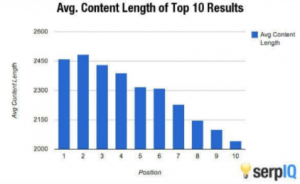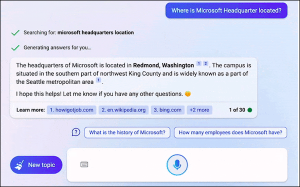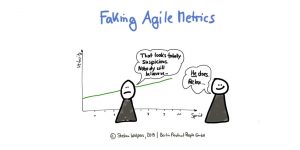Learn to combat the threats posed by made-for-advertising sites, differentiate quality publishers and optimize your digital ad spend.
In digital advertising, a hidden threat is silently draining marketing budgets and undermining the value of online content. “Made for advertising” or “made for arbitrage” (MFA) sites, designed purely to attract ad dollars rather than serve users, are proliferating at an alarming rate.
While they might offer seemingly attractive metrics, several considerations are crucial for marketers to avoid unintended consequences, particularly concerning the impact on publishers.
Why it’s important to combat MFAs
Combating MFA sites is important because they take advantage of digital ads for profit while offering little value to users. The creators of these sites gain by generating high volumes of cheap, low-quality traffic that meets surface-level metrics, such as viewability, but lacks genuine user engagement. This exploitation leads to several negative outcomes:
- Dilution of ad effectiveness: Ads placed on MFA sites may get impressions but often fail to engage the intended audience meaningfully. This misleads advertisers into believing their campaigns are successful based on inflated metrics while the actual impact is minimal.
- Financial gain for fraudsters: MFA operators earn substantial revenue by attracting ad dollars meant for legitimate content creators. They use tactics like frequent ad refreshing and high ad-to-content ratios to maximize their earnings without providing real value to advertisers or users.
- Erosion of user trust: Users encountering low-quality, ad-heavy sites are likely to develop a negative perception of online advertising. This erosion of trust leads to ad blindness and reduces the overall effectiveness of digital marketing campaigns.
- Brand suitability issues: Ads appearing on MFA sites harm brand perception by being associated with low-quality, irrelevant content. This negative association diminishes brand value and makes consumers wary of the advertised products or services.
The Association of National Advertisers (ANA) highlighted significant financial implications in their Programmatic Media Supply Chain Transparency Study. Of the $ 88 billion spent on open web programmatic ads, $ 22 billion is wasted.
The study found that:
- Only $ 0.36 of every dollar entering a demand-side platform (DSP) reaches a consumer, with $ 0.29 going to ad-tech fees and $ 0.35 to low-quality media like invalid traffic (IVT) and MFA inventory.
- MFA supply has surged from 5% of web auctions in early 2020 to nearly 30% by mid-2023.
These findings highlight the need for marketers to address these inefficiencies and risks in current programmatic buying practices.
The impact on legitimate publishers
Legitimate publishers striving to maintain high-quality content often find themselves at a disadvantage. The pressure to generate revenue leads them to increase ad density on their pages, risking unfair categorization as MFAs.
The distinction between a legitimate publisher with high ad density and an MFA site can be blurred, especially when judged by surface-level metrics. This issue is further aggravated by MFA sites delivering high ad impressions at low costs, appealing to advertisers focused on short-term metrics rather than long-term brand health and audience engagement.
Legitimate publishers, particularly those in news, local and diversity (DEI&B) sectors, are feeling constrained as agencies and advertisers are hesitant to invest in them due to concerns over content suitability, political and news-related issues. This caution has forced these publishers to take additional steps to generate revenue, including refreshing ads more often and incorporating more native ads.
While these strategies help generate ad revenue, they compromise the user experience and heighten the likelihood that marketers might consider their site an MFA. This creates a vicious cycle where publishers must balance the need to generate ad revenue with maintaining a high-quality user experience.
Misclassification has severe financial implications for legitimate publishers, as advertisers avoid sites they perceive as MFAs based on flawed criteria. The broader impact on the digital advertising ecosystem is concerning.
The need for better criteria and definitions of MFAs
The current list of characteristics to distinguish MFA sites, published by the ANA, risks unfairly categorizing legitimate sites due to its broad criteria. These guidelines often fail to account for the nuanced nature of content quality and user engagement.
For instance, MFA sites and reputable publishers employ strategies such as a high ad-to-content ratio, frequent ad refreshing and substantial paid traffic to optimize ad performance or grow their audience.
The current guidelines lack the necessary granularity to distinguish between high-quality publishers and MFA sites effectively. For example, poor, templated designs are subjective and vary greatly. What might be considered poor in one context could be a minimalist design choice in another. This broad application of criteria leads to a significant risk of mislabeling high-quality sites as MFAs, which severely impacts publishers who rely on ad revenue.
The reliance on surface-level metrics to define MFAs fails to capture the true value and engagement provided by the content. For instance, an article driving significant social media interactions, comments and shares might still have a high ad-to-content ratio yet deliver substantial value to its audience. The current definitions do not account for such nuances, leading to potential misclassification and unfair penalization of quality publishers.
To move forward, publishers, advertisers, agencies and tech companies categorizing sites must come together and agree on the characteristics of an MFA. This collaboration should focus on more than just aesthetics. A comprehensive approach that considers content quality, user engagement and the overall user experience is crucial.
By establishing clear, agreed-upon standards, the industry can more accurately identify legitimate publishers and ensure ad dollars support valuable content rather than exploitative practices.
Navigating MFAs: 3 recommendations for marketers
To navigate the complex landscape of MFAs and ensure responsible media buying, consider the following tips:
1. Prioritize quality over quantity
Gain deeper insights from publishers about user engagement instead of merely focusing on reaching a large audience. Metrics like time spent on page, bounce rate and other genuine user interactions provide a better gauge of content value than sheer volume. The goal is to reach a large audience and effectively engage the right audience.
2. Support legitimate publishers
Gain insights from publishers on what types of content engage users the most, what messaging resonates with them and current trending topics. Invest in publishers that provide valuable content, even if they have high ad density.
Collaborate with these publishers to optimize ad placements and ensure a positive user experience rather than dismissing them based on surface-level metrics alone. Supporting legitimate publishers is crucial for maintaining a healthy digital advertising ecosystem, as they need advertisers’ backing to continue producing high-quality content.
3. Participate in industry collaboration
Encourage collaboration between advertisers, publishers and industry bodies to refine guidelines and standards. Transparent auditing systems and quality certifications will help legitimate publishers stand out and build trust with advertisers. This collaboration is essential for developing fair and effective standards to create a healthier digital advertising environment.
Invest in genuine content to mitigate the impact of MFAs
By adopting these practices, you can foster a healthier digital advertising ecosystem, mitigate the negative impacts of MFA practices and support the sustainability of quality content. It’s time to take a more responsible approach to media buying, ensuring your investments support publishers who are genuinely committed to providing valuable content.
The post Why marketers must combat the hidden threat of MFA sites appeared first on MarTech.
MarTech(7)
Report Post






